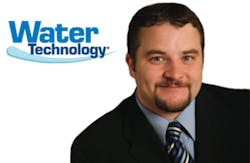Increased media attention and public awareness about Legionnaires’ disease and other water-thriving bacteria have turned the spotlight on the water treatment and infrastructure industries. We have covered news related to this topic online at WaterTechOnline.com and in our daily eNewsletter, WaterTech e-News Daily. We continue the in-depth coverage in this issue.
In this month’s Professor POU/POE, our Technical Editor Dr. Joseph Cotruvo has written about Legionella pneumophila and the vulnerable drinking water distribution system. He writes, “In the CDC MMWR for 2009-2010, waterborne disease outbreaks totaled 33 and they resulted in 1,040 cases and 85 hospitalizations and eight deaths. Most notably, 19 of the 33 outbreaks were caused by legionella bacteria, resulting in 72 cases and eight deaths, and it was the only waterborne illness that resulted in deaths.”
Dr. Cotruvo furthered his research into legionella and treatment in an article titled, “Facilitating supplemental disinfection for Legionella control in plumbing systems,” published in the August 2014 issue of the Journal American Water Works Association. According to Dr. Cotruvo’s findings, legionella’s ability to survive and regrow in biofilm contribute to making this a challenging treatment issue.
“Free chlorine is used in brief shock applications as well as in disinfectant residual mode. Free chlorine is effective for microorganisms in suspension but seems to have difficulty penetrating biofilms. As a chemically reactive species it will have shorter survival in hot water. Chloramine, despite its lower disinfection potency, has shown promise in suppressing biofilm-related regrowth,” wrote Dr. Cotruvo in Journal AWWA.
Also included in this issue on the subject of legionella is an article titled, “Preventing Legionnaires’ disease and other waterborne bacteria through long-term secondary water treatment,” by Tory Schira.
We’d like to hear your thoughts on treating legionella. Be sure to visit www.WaterTechOnline.com frequently and post comments on our forum or articles.
